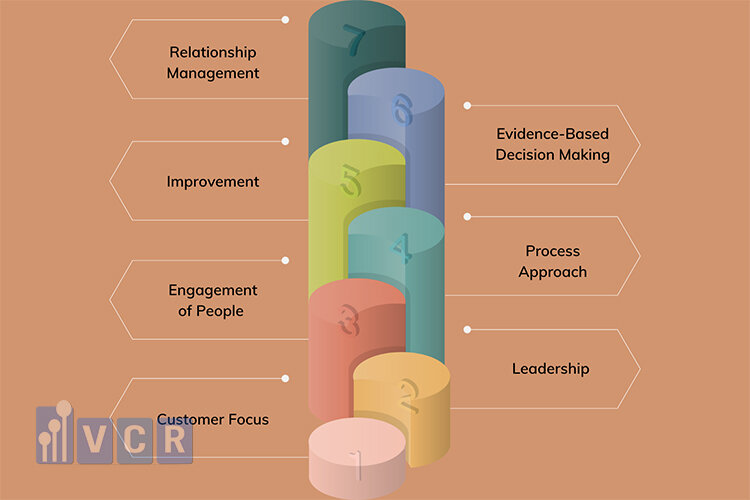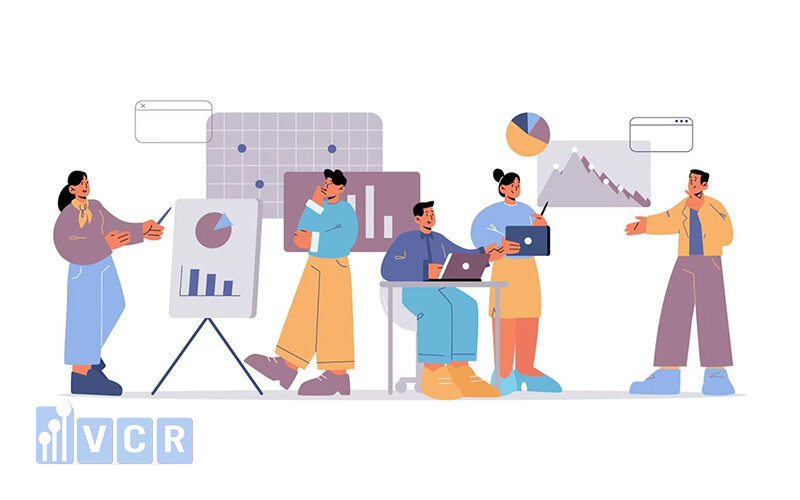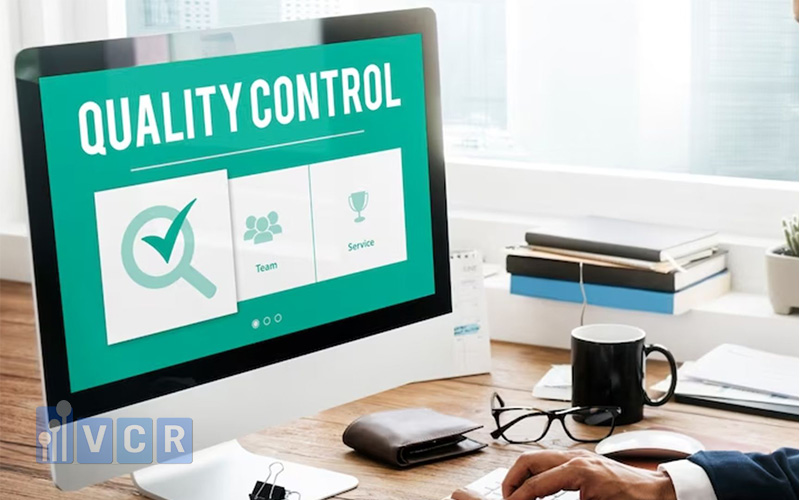The 7 principles of quality management
Quality management principles provide a crucial framework for adopting ISO 9001. These core principles serve as the foundation for quality management throughout your business, enabling the maximization of performance improvement and adherence to compliance standards. The ISO 9001 encompasses seven key quality management principles:
What is ISO 9001?
The ISO 9001 Standard is part of the ISO 9000 family of quality management Standards. As of 2015, ISO 9001 is the prevailing Standard, outlining the essential requirements for establishing a quality management system. This system aims to:
- Ensure consistent quality across all products and services to meet customers' needs.
- Fulfill the demand for continuous improvement, thereby enhancing customer satisfaction.
- Enhance efficiency throughout your business procedures and processes.
- Secure more contracts and tenders, contributing to increased revenues.
- Implement streamlined processes to cut costs, minimize errors, and boost productivity.
The benefits that ISO 9001 can bring to both your business and your customers are numerous. However, achieving these advantages is contingent upon adhering to 7 principles embedded in ISO 9001.
The 7 Principles of Quality Management
As laid out in ISO 9001, the 7 principles of quality management are:

Customer Focus
Cultivating a robust customer focus is a commendable means of showcasing your dedication to quality. Collecting customer feedback, both positive and negative, is crucial, as it enables the identification of non-conformities and facilitates process improvements, thereby fortifying your business's overall performance.

The advantages of adopting a customer-focused approach encompass:
- Cultivating a loyal customer base.
- Enhancing the reputation of your business.
- Sustaining valuable business relationships.
- Augmenting revenues and expanding market share.
In addition to customer satisfaction, it is essential for your business to consider the interests of other stakeholders, including owners, employees, suppliers, investors, and the broader community.
Leadership
A crucial factor in fulfilling the criteria established in the seven quality management principles revolve around effective leadership. This entails having a well-defined vision for your company's future. Conveying this vision in a compelling manner ensures that your entire team aligns their efforts toward common objectives, fostering a shared sense of purpose within your organization. Consequently, this can enhance employee motivation and productivity.

Additional advantages of a robust leadership approach include
- Improved coordination of processes throughout the organization.
- Efficient achievement of quality objectives.
- Aligned strategic goals through continuous development and enhanced managerial capabilities.
- Enhanced functionality facilitated by improved communication among various levels of your organization.
Engagement of People
Quality management systems, such as ISO 9001, extend beyond senior management and involve the active participation of everyone in your organization. Openly discussing issues and sharing knowledge and experiences within your team is crucial to fully harnessing the fundamental quality management principles of ISO 9001. It's imperative that every individual in your company comprehends their role and feels appreciated for their contribution to the organization's success. This not only aids in achieving certification but also underscores your organization's dedication to enhancing quality.
Engaging people throughout your processes yields several benefits:
- Cultivate trust and collaborative working processes throughout your business.
- Boost motivation across the organization to achieve quality objectives.
- Heighten the responsibility of staff to enhance processes and activities.
- Elevate the overall satisfaction of individuals within the business.
Process Approach
Adopting the Plan-Do-Check-Act (PDCA) principle from the ISO 9001 Standard is a strategic approach to instilling a process-driven culture throughout your organization. This established method ensures effective planning, resourcing, and management of your processes and their interactions.

Implementing an organized approach to all your processes yields several benefits:
- Focused efforts on identifying improvement opportunities.
- Aligned processes that foster consistency and positive outcomes for the benefit of your business.
- Enhanced cross-collaboration improving interdepartmental processes and procedures.
- Demonstration of efficiency and effectiveness to stakeholders, instilling confidence in your operations.
By holistically managing various areas in your business, you can synchronize operations for greater efficiency, facilitating the achievement of your objectives. The ongoing measurement and evaluation of these interconnected processes also aid in identifying areas for improvement.
Improvement
Continuous improvement stands as a fundamental pillar of the ISO 9001 quality management system, constituting your organization's central objective. It involves the implementation of processes to identify risks, seize opportunities, and address non-conformities. Through systematic measurement and monitoring, you can identify areas for enhancement, fortifying the resilience of your business.
Additional advantages offered by continual improvement for your business encompass:
- Leveraging learning opportunities to facilitate development and improvement.
- Achieving overall improved performance, thereby enhancing customer satisfaction.
- Proactively anticipating changes or challenges and implementing measures to enable your company to respond effectively.
- Conducting investigations to determine the root causes of issues, with preventive and corrective actions in place.
Evidence-Based Decision Making
Precise and dependable data is indispensable for making well-informed decisions. For instance, addressing the root cause of a non-conformity requires the appropriate evidence. Ensure that information is accessible to those who require it and maintain open communication channels.
Establishing an evidence-based approach to decision-making yields numerous business advantages, including:
- Accurate performance assessments aiding in the achievement of quality objectives and enhancing the quality of decisions made by your business.
- Demonstrating the effectiveness and efficiency of your operations, providing insights into the success of previous processes and decisions.
- Utilizing evidence to construct compelling cases for driving beneficial changes aligned with your overarching company goals.
Relationship Management
Establishing a relationship of trust with your suppliers can transform them into a source of competitive advantage. Cultivating enduring relationships with suppliers and other stakeholders involves finding a balance between short-term financial gains and long-term, mutually beneficial strategies.

Strengthening relationships within your business fosters an environment conducive to expansion and growth, yielding several benefits, including:
- Alignment of goals and objectives across all parties.
- Efficient management of the supply chain.
- Shared intelligence that benefits all parties in risk management.
- Improved organizational performance and responsiveness to opportunities or risks for all involved stakeholders.
How important are the seven quality management principles?
A Quality Management System (QMS) consists of a set of guidelines that businesses must adhere to in order to uphold the desired level of excellence. It serves as a tool for organizations to review and enhance their policies.
A robust QMS has the capacity to rejuvenate crucial aspects of an organization, spanning manufacturing, production, finance, or technology. The widely recognized international standard for organizations, ISO 9001, is often used interchangeably with quality management systems (QMS) and is commonly employed for this purpose. Essentially, ISO 9001 encompasses documents that facilitate the effective implementation of a QMS.

The principles underlying Good Clinical Practices (GCP), Good Manufacturing Practices (GMP), and Good Laboratory Practices (GMP/GLP), mandated by the majority of government regulatory bodies, are rooted in these principles. These guidelines not only form the foundation of quality systems but also represent generally sound business practices that should permeate throughout an organization. They will continue to propel global improvement and process excellence by standardizing management approaches based on them.
Benefits of a Quality Management System
Incorporating the seven quality management principles as part of your ISO 9001 certification process can assist you in fulfilling the essential requirements outlined in the Standard.
Service Quality Management Objectives:
- Ensure consistency across departments in customer service policies and the goals set by the business.
- Assure quality compliance with customer requirements at the lowest cost.
- Achieve service quality management objectives through coordinated improvement of economic conditions and product technology, while avoiding waste and actively exploiting potential markets.
- Improve services concurrently with increasing the quality and quantity of products.
Product Quality Management Objectives:
- Increase customer loyalty.
- Enhance competitiveness compared to competitors.
- Respond promptly to consumer markets and minimize waste in production and business.
- Establish goals and plans to improve product quality.
- Control operational, production, and product distribution processes to promote sales.
Human Resources Quality Management Objectives:
- Ensure consistency in implementing plans, aiming towards the common goals of the business.
- Ensure effectiveness in job performance.
- Have specific work plans, accompanied by clear and fair salary policies to encourage effectiveness in management.
Frequently asked questions
Who developed the quality principles?
The quality management and quality assurance committee (ISO/TC 176) developed the quality management principles at the International Organisation for Standardisation.
When were the quality management principles introduced to ISO Standards?
The quality management principles were introduced with the publication of ISO 9001:2000.
What are the requirements of ISO 9001?
The requirements of ISO 9001 can be roughly divided into four key areas:
- Management responsibility
- Resource management
- Product realization
- Measurement, analysis, and improvement.
























